Ted Kaczynski
description: American domestic terrorist, mathematician and anarchist (1942–2023)
45 results

Dangerous Personalities: An FBI Profiler Shows You How to Identify and Protect Yourself From Harmful People
by
Joe Navarro
and
Toni Sciarra Poynter
Published 6 Oct 2014
The former employee or ex-boyfriend who, angry about how he’s been treated, shows up at the office unannounced and armed. The brilliant scientist no one listens to, so he moves to a smelly cabin in Montana where he can warn us of the threat of technology by sending bombs (16 in all) through the mail that killed 3 and injured 23 (“Unabomber” Theodore John “Ted” Kaczynski, PhD). These are more than cranky people. They’re driven by irrational fear and distrust. They’re thin-skinned and hyperreactive. And when crossed, rejected, or embarrassed, they may lash out and can be extremely dangerous. When coupled with narcissism, the paranoid personality drives violence on every level: from criminals to cult leaders to dictators who live by their own rules, vilify others, and annihilate anything that gets in their way.
…
These individuals may show up at demonstrations and make it a point to not just argue but to be vitriolic, even physical, pushing others, blocking cars, damaging property. They skate very close to being unstable—all it takes is a trigger. Some are mental lightweights, while others have high IQs and achievements to their name. Ted Kaczynski had a very high IQ and a real knack for making bombs and hiding their origin. Howard Hughes was smart and rich but very paranoid—so much so that he cocooned himself in hotel rooms during the last 10 years of his life, allowing no outsiders to see him. He died isolated from the world in a Las Vegas hotel room in 1976.
…
Eventually, if you associate or interact with the person long enough, these will be revealed to you—if not in words, then through the person’s paranoid, eccentric, or dangerous behavior. Some are so mistrusting that they keep lists of the comings and goings of co-workers, neighbors, family members, strangers, or anyone who passes by. Ted Kaczynski did just that from his remote cabin in Montana. President Richard Nixon, who had many of the features of the paranoid personality, kept an enemies list and repeatedly stated to others that he just could not “confide in anyone.”5 Opinionated, Argumentative, Prone to Hate Adaptability is a hallmark of a healthy human being.

What Technology Wants
by
Kevin Kelly
Published 14 Jul 2010
Langdon Winner claims that “technical artifice as an aggregate phenomenon [or what I call the technium] dwarfs human consciousness and makes unintelligible the systems that people supposedly manipulate and control; by this tendency to exceed human grasp and yet to operate successfully according to its own internal makeup, technology is a total phenomenon which constitutes a ‘second nature’ far exceeding any desires or expectations for the particular components.” Ted Kaczynski, the convicted bomber who blew up dozens of technophilic professionals, killing three of them, was right about one thing: Technology has its own agenda. It is selfish. The technium is not, as most people think, a series of individual artifacts and gadgets for sale. Rather, Kaczynski, speaking as the Unabomber, echoes the arguments of Winner and many of the points I am making in this book, claiming that technology is a dynamic, holistic system.
…
You politely try to escape the squeeze of technological civilization by retreating to its furthest reaches, where you establish a relatively techno-free lifestyle—and then the beast of civilization/development/industrial technology stalks you and destroys your paradise. Is there no escape? The machine is ubiquitous! It is relentless! It must be stopped! Ted Kaczynski, of course, is not the only wilderness lover to suffer the encroachment of civilization. Entire tribes of indigenous Americans were driven to remote areas by the advance of European culture. They were not running from technology per se (they happily picked up the latest guns when they could), but the effect was the same—to distance themselves from industrial society.
…
Success can be hoped for only by fighting the technological system as a whole; but that is revolution not reform. . . . While the industrial system is sick we must destroy it. If we compromise with it and let it recover from its sickness, it will eventually wipe out all of our freedom. For these reasons Ted Kaczynski went to the mountains to escape the clutches of civilization and then later to plot his destruction of it. His plan was to make his own tools (anything he could hand fashion) while avoiding technology (stuff it takes a system to make). His small one-room shed was so well constructed that the feds later moved it off his property as a single intact unit, like a piece of plastic, and put it in storage (it now sits reconstructed in the Newseum in Washington, D.C.).
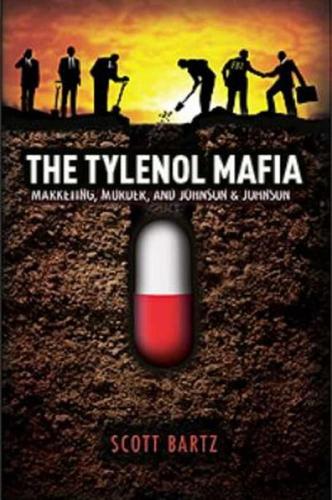
The Tylenol Mafia
by
Scott Bartz
Published 21 Sep 2011
The FBI put an end to Carl Vergari’s investigation of the Tylenol manufacturing and distribution network just as he was closing in on the repackaging facility where the Tylenol killer had dropped cyanide-laced Tylenol capsules into the bottling production lines. The FBI’s active participation in the reactivated 1982 Tylenol murders case may be primarily about keeping hidden its conspicuous role in covering up the 1986 Tylenol killer’s modus operandi. A clue to the real reason for the FBI’s involvement in this reactivated investigation came from Ted Kaczynski, aka the Unabomber. Court documents that Kaczynski filed in May 2011 revealed that the FBI had added him to its list of suspects in the reactivated Tylenol murders case. Kaczynski had been arrested in 1996 as the perpetrator of a mail bombing spree that spanned from 1978 to 1995, killing three people and injuring 23 others.
…
On May 19, 2011, the news media got wind of Kaczynski’s court filing and had a field day reporting that the Unabomber was now a suspect in the Tylenol murders. FBI spokesperson Ross Rice confirmed that the FBI had asked Kaczynski for a DNA sample. “As part of our re-examination of the evidence developed in connection with the 1982 Tylenol poisonings,” said Ross, “we have attempted to secure DNA samples from numerous individuals, including Ted Kaczynski. The feds cannot charge Kaczynski for the 1982 Tylenol murders, because those murders were not federal crimes. The 1986 Tylenol tamperings and murder, however, were federal crimes. In response to the 1982 Tylenol tamperings, Congress passed the Federal Anti-Tampering Act on October 13, 1983, making it a federal crime to tamper with consumer products.
…
The FBI appears to be carrying out a stealthy investigation into the 1986 Tylenol murder; hoping to wrap up that murder and the 1982 Tylenol murders in one neat package. But first, it needs a patsy for the 1986 Tylenol murder who can also conveniently take the fall for the 1982 Tylenol murders. Ted Kaczynski would fit that role quite nicely. The FBI’s search for someone who could take the fall for both the 1982 and 1986 Tylenol tampering incidents was evident back in January 2010 when the Certificate of Materiality was served on James and LeAnn Lewis, requiring them both to submit DNA samples. The FBI cannot frame James for the 1986 Tylenol murder because he was in prison at that time – hence, the FBI’s injudicious interest in LeAnn.
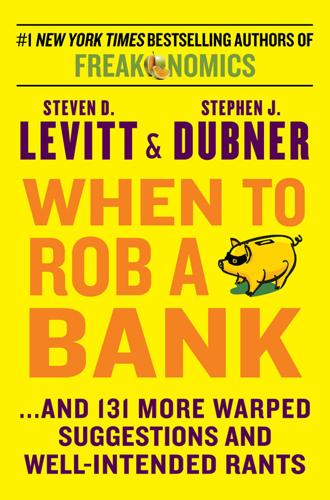
When to Rob a Bank: ...And 131 More Warped Suggestions and Well-Intended Rants
by
Steven D. Levitt
and
Stephen J. Dubner
Published 4 May 2015
My mother had an extraordinary (and long-buried) story to tell about her religious faith. I’ve interviewed Ted Kaczynski, the Unabomber; the rookie class of the NFL; a remarkable cat burglar who stole only sterling silver. But lately I have been writing about economists—and, most fruitfully, with the economist Steve Levitt. This is a whole new bag, and here’s why. A non-fiction writer like me, trained equally in journalism and literature, is constrained by what his subjects tell him. Yes, I am afforded great latitude in surrounding a subject—if Ted Kaczynski won’t discuss his trial, for instance, there are plenty of others who will—but I am gravely limited by what people will tell me and how they tell it.
…
Waterman, Jr., In Search of Excellence: Lessons from America’s Best-Run Companies (Harper & Row, 1982; HarperBusiness Essentials, 2004). 287 “WHY I LIKE WRITING ABOUT ECONOMISTS”: “My mother had an extraordinary (and long-buried) story to tell”: See Dubner, Turbulent Souls: A Catholic Son’s Return to His Jewish Family (William Morrow, 1998); republished as Choosing My Religion: A Memoir of a Family Beyond Belief (HarperPerennial, 2006.) / 287 “I’ve interviewed Ted Kaczynski, the Unabomber”: See Dubner, “I Don’t Want to Live Long. I Would Rather Get the Death Penalty Than Spend the Rest of My Life in Prison,” Time, October 18, 1999. / 287 “The rookie class of the N.F.L.”: See Dubner, “Life Is a Contact Sport,” The New York Times Magazine, August 18, 2002. / 287 “A remarkable cat burglar who stole only sterling silver”: See Dubner, “The Silver Thief,” The New Yorker, May 17, 2004. / 288 “After I wrote about the economist Roland Fryer”: See Dubner, “Toward a Unified Theory of Black America,” The New York Times Magazine, March 20, 2005.

Science...For Her!
by
Megan Amram
Published 4 Nov 2014
Good thing this ugly duckling turned into a swan! * * * 2. Daniel Day-Lewis! Even this young, you can recognize the future talent in his expressive features. * * * 3. Cameron Diaz! Not pointing any fingers, but it looks like someone’s had a little work done since then . . . * * * 4. Ted Kaczynski! It’s very disturbing to look at this early picture of a killer and truly see the evil radiating from within as early as high school. Genes * * * Since it’s distracting to bring up a homophone of one of women’s favorite things without showing them, I will start off this section with a treat—a glossy page chock full of photos of beautiful jeans!
…
Baseball, the “American Pastime,” is about using bats (“dicks”) to hit balls (“balls”) all while blowing each other in the dugout (“RBI”). And how about the American flag? Obviously thirteen dicks going into fifty buttholes. America has time and time again proved itself as a launching ground for young starlets. It’s fun seeing people before they became huge stars, like John Ritter, Stella McCartney, Theodore John “Ted” Kaczynski, and Ted “Ted” Bundy. But the ensemble works best when we see the regulars yearn for a raise or promotion, struggle with Mary Tyler Moore’s foibles, and be there for Mary Tyler Moore when the going gets rough. I stole this from a review for The Mary Tyler Moore Show, but I think it completely and entirely makes sense to literally lift from that review and drop it into this context as well.

The Age of Spiritual Machines: When Computers Exceed Human Intelligence
by
Ray Kurzweil
Published 31 Dec 1998
Not everyone will find this prospect appealing, so the Luddite issue will broaden in the twenty-first century from an anxiety about human livelihoods to one concerning the essential nature of human beings. However, the Luddite movement is not likely to fare any better in the next century than it has in the past two. It suffers from the lack of a viable alternative agenda. Ted Kaczynski, whom I quote above from his so-called “Unabomber Manifesto,” entitled Industrial Society and Its Future, advocates a simple return to nature. 22 Kaczynski is not talking about a contemplative visit to a nineteenth-century Walden Pond, but about the species dropping all of its technology and reverting to a simpler time.
…
It has its own set of styles, so it is feasible for its knowledge base to be relatively complete within its visual domain. Of course, human artists, even brilliant ones, also have a boundary to their domain. Aaron is quite respectable in the diversity of its art. OKAY, JUST TO SWITCH TO SOMEONE MUCH LESS RESPECTABLE, YOU QUOTED TED KACZYNSKI TALKING ABOUT HOW THE HUMAN RACE MIGHT DRIFT INTO DEPENDENCE ON MACHINES, AND THEN WE’LL HAVE NO CHOICE BUT TO ACCEPT ALL MACHINE DECISIONS. BASED ON WHAT YOU SAID ABOUT THE IMPLICATIONS OF ALL THE COMPUTERS STOPPING, AREN’T WE ALREADY THERE? We are certainly there with regard to the dependence, not yet with regard to the level of machine intelligence.
…
Department of Commerce, Bureau of the Census, Statistical Abstract of the United States, 1997. 20 Ben J. Wattenberg, ed., The Statistical History of the United States from Colonial Times to the Present. 21 U.S. Department of Commerce, Bureau of the Census, Statistical Abstract of the United States, 1997. 22 Ted Kaczynski’s Unabomber Manifesto was published in both the New York Times and the Washington Post in September 1995. The full text of the document is available on numerous web pages, including: <http://www.soci.nui.edu/~critcrim/uni/uni.txt>. CHAPTER 9: 2009 1 A consortium of eighteen manufacturers of cellular telephones and other portable electronic devices is developing a technology called Bluetooth, which provides wireless communications within a radius of about ten meters, at a data rate of 700 to 900 kilobits per second.

Puzzling People: The Labyrinth of the Psychopath
by
Thomas Sheridan
Published 1 Mar 2011
We should not completely discard the imagery of the quack doctor or mad scientist either, because such individuals really do exist. The notorious UNABOMBER Ted Kaczynski was accepted into Harvard University at the age of 16, where he earned an undergraduate degree, and later a PhD in mathematics from the University of Michigan. He became an assistant professor at the University of California, Berkeley at age 25. Then he started making bombs and killing innocent people in order to save the planet. Now where this gets very interesting is his manifestos are almost identical to the current depopulation fetish among intellectuals and college professors. Ted Kaczynski’s population reduction plan was implemented in an immediate ‘hands-on’ manner, whereas the pontificating psychopathic academics prefer mass sterilisation and forced abortions rather than pipe bombs.
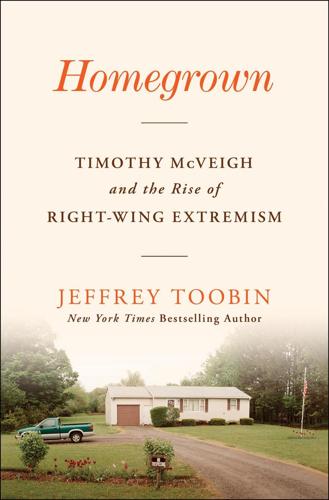
Homegrown: Timothy McVeigh and the Rise of Right-Wing Extremism
by
Jeffrey Toobin
Published 1 May 2023
… And if we trace it to a particular nation, what about hitting the nation anyway, even if we don’t know who exactly did it?” After McVeigh was arrested and the evidence against him became overwhelming, a different kind of distancing took place. To this day, McVeigh is often described as a “survivalist,” an isolated and eccentric figure like Ted Kaczynski, the Unabomber, who carried out his terrorist attacks by mail from a remote cabin in Montana. In a similar vein, McVeigh has been called “antigovernment,” as if he were a kind of anarchist opposed to all forms of authority. Both descriptions are inaccurate. Rather, McVeigh had a different ideological profile, one with deep roots in American history and a modern legacy that extends to the present day.
…
After deliberations at the highest level of government, Freeh and Reno advised the papers to publish the manifesto, in the hope that the public attention would lead to his capture. The Post published the manifesto on September 19, 1995, and it showcased an idiosyncratic ideology that borrowed from both the left and right. (The style and content of the work reminded David Kaczynski of his brother Ted, who lived an isolated existence in the Montana woods. Ted Kaczynski was arrested as the Unabomber in his tiny cabin on April 3, 1996.) At the time, and especially in later years, the two crimes, and especially the two lead defendants, came to be seen in similar ways. Kaczynski and McVeigh were perceived as evil eccentrics whose views and actions emerged from the bizarre circumstances of their individual lives.
…
After McVeigh’s conviction, the legal process moved slowly, but it did develop an inexorable momentum as the months and years passed. The verdict and death sentence were upheld at every stage. The prison authorities in Florence put McVeigh on “bombers row”—the wing with the most notorious inmates. He was next door to Ted Kaczynski, the Unabomber, and near Ramzi Yousef, the mastermind of the World Trade Center bombing in 1993. The three men’s stories were strangely intertwined, and they struck up a friendship of sorts. (The Trade Center bombing led many to speculate that the Oklahoma City bombing was the work of foreign terrorists like Yousef, and Jones had attempted to show links between Nichols and Yousef in the Philippines, where Yousef hid out.

The Singularity Is Near: When Humans Transcend Biology
by
Ray Kurzweil
Published 14 Jul 2005
RAY: I would expect the intelligence that arises from the Singularity to have great respect for their biological heritage. GEORGE 2048: Absolutely, it's more than respect, it's ... reverence. MOLLY 2004: That's great, George, I'll be your revered pet. Not what I had in mind. NED: That's just how Ted Kaczynski puts it: we're going to become pets. That's our destiny, to become contented pets but certainly not free men. MOLLY 2004: And what about this Epoch Six? If I stay biological, I'll be using up all this precious matter and energy in a most inefficient way. You'll want to turn me into, like, a billion virtual Mollys and Georges, each of them thinking a lot faster than I do now.
…
—ALFRED NORTH WHITEHEAD This brings us to the issue of relinquishment, which is the most controversial recommendation by relinquishment advocates such as Bill McKibben. I do feel that relinquishment at the right level is part of a responsible and constructive response to the genuine perils that we will face in the future. The issue, however, is exactly this: at what level are we to relinquish technology? Ted Kaczynski, who became known to the world as the Unabomber, would have us renounce all of it.31 This is neither desirable nor feasible, and the futility of such a position is only underscored by the senselessness of Kaczynski's deplorable tactics. Other voices, less reckless than Kaczynski's, are nonetheless likewise arguing for broad-based relinquishment of technology.
…
Advanced medical treatments require expensive, high-tech equipment that can be made available only by a technologically progressive, economically rich society. Clearly you can't have much progress in medicine without the whole technological system and everything that goes with it. The observer I am quoting here is, again, Ted Kaczynski.33 Although one will properly resist Kaczynski as an authority, I believe he is correct on the deeply entangled nature of the benefits and risks. However, Kaczynski and I clearly part company on our overall assessment of the relative balance between the two. Bill Joy and I have had an ongoing dialogue on this issue both publicly and privately, and we both believe that technology will and should progress and that we need to be actively concerned with its dark side.
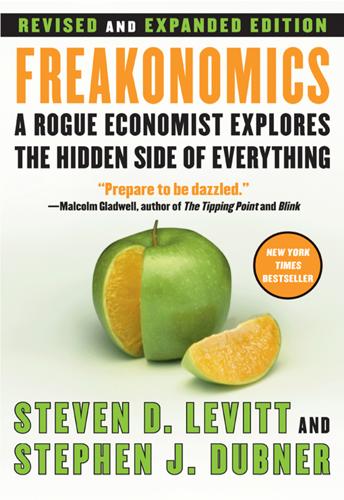
Freakonomics: A Rogue Economist Explores the Hidden Side of Everything
by
Steven D. Levitt
and
Stephen J. Dubner
Published 11 Apr 2005
The black boy from Daytona Beach was abandoned by his mother, was beaten by his father, and had become a full-fledged gangster by his teens. So what became of the two boys? The second child, now twenty-eight years old, is Roland G. Fryer Jr., the Harvard economist studying black underachievement. The white child also made it to Harvard. But soon after, things went badly for him. His name is Ted Kaczynski. BONUS MATERIAL ADDED TO THE REVISED AND EXPANDED 2006 EDITION The original New York Times Magazine article about Steven D. Levitt by Stephen J. Dubner, which led to the creation of this book. Seven “Freakonomics” columns written for the New York Times Magazine, published between August 2005 and April 2006.
…
.: Publications International/Signet, 1994); and Cleveland Kent Evans, The Ultimate Baby Name Book (Lincolnwood, Ill.: Publications International/Plume, 1997). EPILOGUE: TWO PATHS TO HARVARD THE WHITE BOY WHO GREW UP OUTSIDE CHICAGO: This passage, as well as the earlier passage about the same boy on pp. 141–42, was drawn from author interviews and from Ted Kaczynski, “Truth Versus Lies,” unpublished manuscript, 1998; see also Stephen J. Dubner, “I Don’t Want to Live Long. I Would Rather Get the Death Penalty than Spend the Rest of My Life in Prison,” Time, October 18, 1999. THE BLACK BOY FROM DAYTONA BEACH: This passage, as well as the earlier passage about the same boy on p. 142, was drawn from author interviews with Roland G.
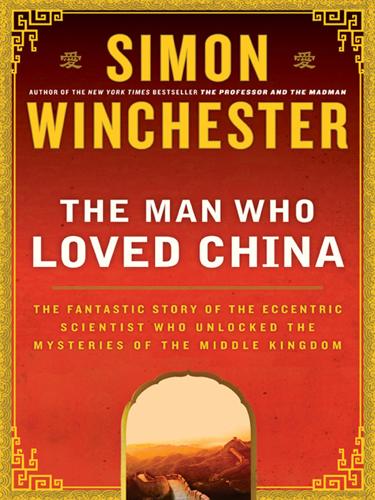
The Man Who Loved China: The Fantastic Story of the Eccentric Scientist Who Unlocked the Mysteries of the Middle Kingdom
by
Simon Winchester
Published 1 Jan 2008
There was an oddly chilling coda to Needham’s brief visit to Chicago in the spring of 1978. He had been invited to give three public lectures at Northwestern University. For his second talk he decided on the topic “Gunpowder: Its Origins and Uses.” One of those who came to hear his lecture was a wild-haired loner of a mathematician, a tragic, brilliant man named Ted Kaczynski. A short while earlier, professors at a Chicago branch of the University of Illinois had summarily rejected a brief essay Kaczynski had written on the evils of modern society, and one mathematician there had heard him mutter, bitterly, that he would eventually “get even” with those who had spurned him.
…
On May 24, six weeks after sitting through Needham’s lecture, Kaczynski fashioned a wooden-cased explosive device made of gunpowder and match heads, and mailed it to one of the professors who had rejected him. It was intercepted, exploded, and injured a campus security guard. There were no clues as to who was the perpetrator of the crime, and the incident marked the beginning of an extraordinary, bizarre, and frightening period in modern American history. Over the next two decades Ted Kaczynski, who lived alone in a remote shack in the mountains of Montana, went on to send waves of carefully made and ever more lethal bombs to academics, killing three people and injuring more than twenty. The press and the FBI called him the Unabomber. He remained at large until his arrest in April 1996.
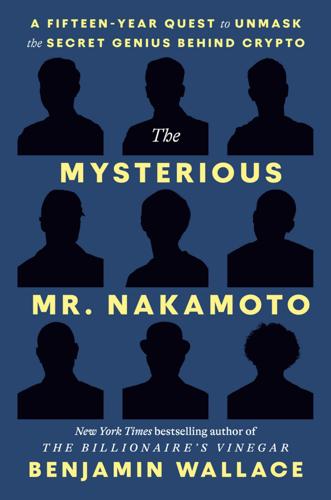
The Mysterious Mr. Nakamoto: A Fifteen-Year Quest to Unmask the Secret Genius Behind Crypto
by
Benjamin Wallace
Published 18 Mar 2025
Maybe Nakamoto had never told anyone. I thought of the title of one of Nick Szabo’s essays: “Trusted Third Parties Are Security Holes.” The more years that passed without a leak, the more likely it seemed that Nakamoto must be either dead or superhumanly discreet. Only a stylometry of sorts had finally unmasked Ted Kaczynski, when his sister-in-law, reading the Unabomber’s thirty-five-thousand-word antitechnology manifesto printed in The Washington Post, thought it sounded alarmingly like her husband’s hermit brother in Montana. I’d thought only stylometry held the hope of cracking the Nakamoto mystery too. But now I wasn’t so sure.
…
GO TO NOTE REFERENCE IN TEXT The person who’d tipped off the British newspaper: Allan Kozinn, “Lawyer Is Fined for Revealing Rowling as Author of Detective Novel,” The New York Times, January 2, 2014. GO TO NOTE REFERENCE IN TEXT “Trusted Third Parties Are Security Holes”: Nick Szabo, 2001, Nick Szabo’s Papers and Concise Tutorials, WM. GO TO NOTE REFERENCE IN TEXT sounded alarmingly like her husband’s hermit brother: “Unabomber Ted Kaczynski’s Brother, Sister-in-Law Recall Turning Him In to FBI,” ABC News, February 10, 2016. GO TO NOTE REFERENCE IN TEXT “grossly insufficient”: Rob Wile, “PROFESSOR: There Is a Big, Gaping Flaw in New Satoshi Study,” Business Insider, April 17, 2014. GO TO NOTE REFERENCE IN TEXT “How Deep Are You?”
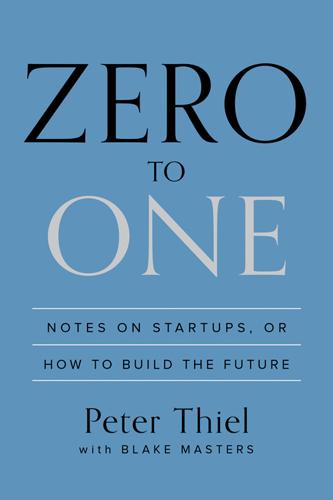
Zero to One: Notes on Startups, or How to Build the Future
by
Peter Thiel
and
Blake Masters
Published 15 Sep 2014
If there are many secrets left in the world, there are probably many world-changing companies yet to be started. This chapter will help you think about secrets and how to find them. WHY AREN’T PEOPLE LOOKING FOR SECRETS? Most people act as if there were no secrets left to find. An extreme representative of this view is Ted Kaczynski, infamously known as the Unabomber. Kaczynski was a child prodigy who enrolled at Harvard at 16. He went on to get a PhD in math and become a professor at UC Berkeley. But you’ve only ever heard of him because of the 17-year terror campaign he waged with pipe bombs against professors, technologists, and businesspeople.

These Strange New Minds: How AI Learned to Talk and What It Means
by
Christopher Summerfield
Published 11 Mar 2025
In 1995, by which time three people had been killed and dozens injured, the Unabomber broke cover, anonymously proposing a deal: he would desist if the New York Times published his ‘manifesto’, a long and rambling essay that decried the ills of contemporary society. After some discussion, the newspaper agreed. Shortly after its publication, a man called David Kaczynski got in touch to say that the writing reminded him uncannily of his brother. Ted Kaczynski had once been a promising computer scientist at UC Berkeley, but had formed radical views about the dangers of the modern world, and dropped out to live as a hermit in a remote woodland region of Montana. The FBI recruited a Vassar academic called Donald Foster to scrutinize the wording of the manifesto.
…
Since then, Foster has notched up several major scalps, including unmasking the anonymous writer of the political roman à clef Primary Colors, which satirized the 1992 Clinton electoral campaign. Foster’s analysis of the Unabomber manifesto was unequivocal – it was beyond doubt a match to earlier writings of Ted Kaczynski. The FBI arrested him at his remote cabin, finding yet another bomb primed and ready for dispatch. Kaczynski received a whole life jail term, and died behind bars in 2023. Linguistic forensics is possible because of the statistical patterns that exist among words. Every time you put pen to paper, you leave a fingerprint – a trace of textual DNA – expressed in the frequencies of the words you prefer to use, and the probabilities of certain turns of phrase.
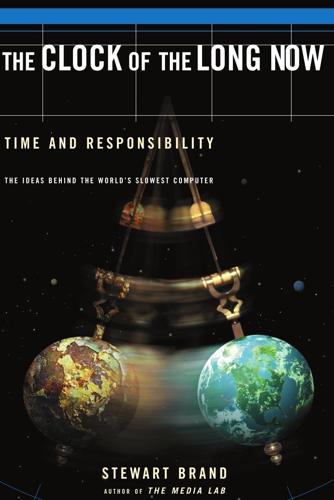
Clock of the Long Now
by
Stewart Brand
Published 1 Jan 1999
Another long-view service has been suggested by Esther Dyson. Every so often the public is gripped by a great mystery. Who kidnaped the Lindbergh baby? Who was behind the killing of President Kennedy? Did Dr. Sam Sheppard murder his wife? Who was the Unabomber? Time has solved two of these. Math instructor Ted Kaczynski was the Unabomber; and the convicted Dr. Sheppard was innocent back in 01954.3 DNA analysis forty-four years later proved that a window washer, Richard Eberling, not only killed Mrs. Sheppard but raped her first (something never mentioned in the celebrated trial). The Long Now Library could preserve rich archives of such mysteries so that they can be relived in light of what eventually is discovered.

The People vs Tech: How the Internet Is Killing Democracy (And How We Save It)
by
Jamie Bartlett
Published 4 Apr 2018
* Examples of excellent books on technology which do not really consider the way in which technological advances and changes will be shaped by politics include Max Tegmark’s Life 3.0 and Nick Bostrom’s Superintelligence. The opposite is true as well: Steven Levitsky and Daniel Ziblatt’s How Democracies Die barely mentions technology at all. * Once questions of freedom and the human spirit are invoked, it’s impossible to know how far opposition can go. Between 1978 and 1995 the ‘Unabomber’, aka Ted Kaczynski, sent 16 bombs to targets that included universities and airlines, killing three people and injuring 23. Kaczynski, a Harvard maths prodigy who had disappeared to live off-grid in his twenties, was motivated by a belief that technological change was destroying human civilisation and would usher in a period of dehumanised tyranny and control.

The Reluctant Spy
by
John Kiriakou
Published 30 Jan 2009
But my time in the region was drawing to an end. After the Saunders assassination, everyone waited for the inevitable communiqué from 17 November, which always delivered a long diatribe, sometimes twenty-five or thirty pages long, listing the usual Marxist-Leninist claptrap that supposedly led to its decision to kill. Think of “Unabomber” Ted Kaczynski’s 1995 manifesto, all thirty-five thousand words of it, and you’d get some idea of the tone and substance of these 17 November jeremiads. The group stayed true to form and took its grievances public in early August 2000. It was the usual stuff, except for a passage that snapped my head back and caught the attention of my bosses.
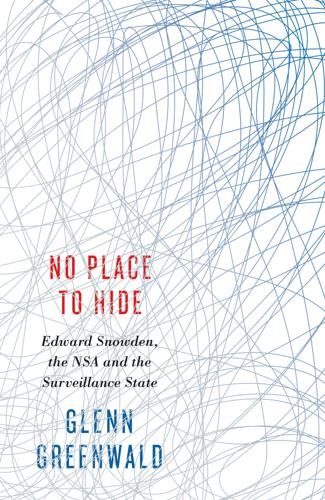
No Place to Hide: Edward Snowden, the NSA, and the U.S. Surveillance State
by
Glenn Greenwald
Published 12 May 2014
I didn’t want them to think we were dealing with someone unstable, particularly since, having spent many hours talking to him, I knew that he was exceptionally rational and deliberative. My fear was quickly validated. “This is going to sound crazy to some people,” Gibson pronounced. “Some people and pro-NSA media types will say it’s a bit Ted Kaczynski-ish,” I agreed. “But ultimately, the documents are what matters, not him or his motives for giving them to us. And besides, anyone who does something this extreme is going to have extreme thoughts. That’s inevitable.” Along with that manifesto, Snowden had written a missive to the journalists to whom he gave his archive of documents.
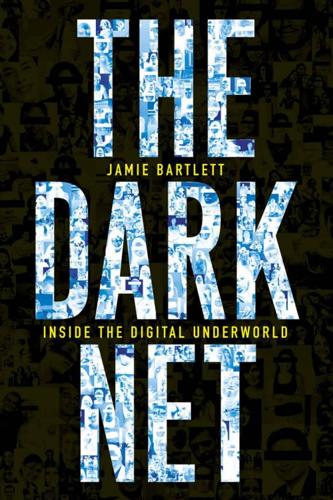
The Dark Net
by
Jamie Bartlett
Published 20 Aug 2014
He wants to get rid of it: Facebook, computers, telephones, electricity, steam-powered engines – the lot. Anarcho-primitivism is a branch of anarchist philosophy, which believes in stateless, non-hierarchical and voluntary forms of human organisation, based on simple, pre-civilisation collective living. The most infamous neo-Luddite of modern times was the American Ted Kaczynski, better known as the Unabomber. From 1978 to 1995, Kaczynski sent sixteen bombs to targets including universities and airlines, killing three people and injuring twenty-three. In his 30,000-word essay ‘Industrial Society and Its Future’, Kaczynski argued that his bombings were extreme but necessary to attract attention to the erosion of human freedom brought about by modern technologies requiring large-scale organisation.
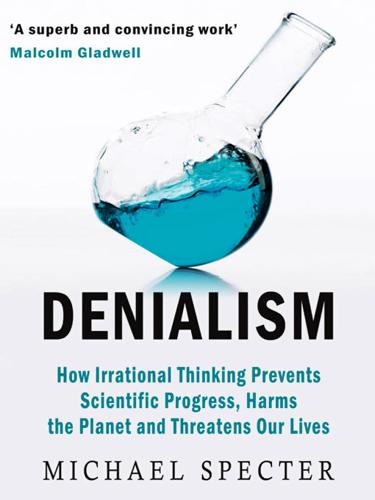
Denialism: How Irrational Thinking Hinders Scientific Progress, Harms the Planet, and Threatens Our Lives
by
Michael Specter
Published 14 Apr 2009
They were the worst industrial accidents in history—one inflicting immense casualties and the other a worldwide sense of dread. The message was hard to misinterpret: “Our lives depend on decisions made by other people; we have no control over these decisions and usually we do not even know the people who make them,” wrote Ted Kaczynski, better known as the Unabomber, in his essay “Industrial Society and Its Future”—the Unabomber Manifesto. “Our lives depend on whether safety standards at a nuclear power plant are properly maintained; on how much pesticide is allowed to get into our food or how much pollution into our air; on how skillful (or incompetent) our doctor is. . . .
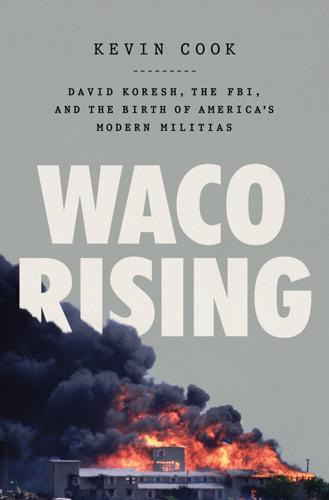
Waco Rising: David Koresh, the FBI, and the Birth of America's Modern Militias
by
Kevin Cook
Published 30 Jan 2023
In 2022 he consulted on a sequel to Paramount TV’s 2018 miniseries and a Netflix documentary about Waco, both scheduled for 2023. CLINT VAN ZANDT, Noesner’s replacement as lead negotiator at Waco, headed the FBI’s so-called Silence of the Lambs Behavioral Science Unit and led the profiling team that helped capture Unabomber Ted Kaczynski in 1996. Looking back on his time at Waco, Van Zandt said watching the CEVs insert tear gas on April 19, 1993, was “akin to sitting on the bow of the Titanic and watching the iceberg approach.” ATF agent JIM CAVANAUGH, the first Waco negotiator, shed tears during testimony for the House of Representatives’ inquiry.
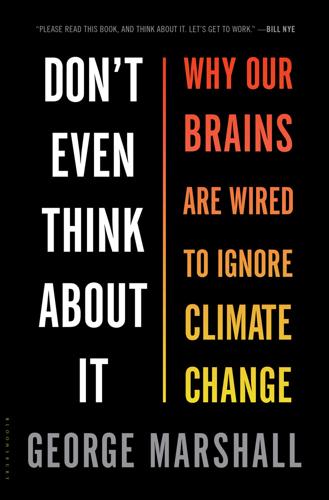
Don't Even Think About It: Why Our Brains Are Wired to Ignore Climate Change
by
George Marshall
Published 18 Aug 2014
Roosevelt led the tally, all well ahead of Benedict Arnold, Timothy McVeigh, and John Wilkes Booth. The inability to differentiate between psychopathic killers and ideological opponents is perfectly exemplified in a notorious billboard erected by the Heartland Institute in Chicago with the photograph of the murderer Ted Kaczynski (the Unabomber) and the caption “I still believe in global warming, do you?” This ludicrous advertisement has inspired numerous Internet parodies, such as a photo of Adolf Hitler with the quote “I still believe kittens are cute, do you?” So much for the decent game. As our meeting closes, Ebell offers me a bowl containing four small round chocolates.
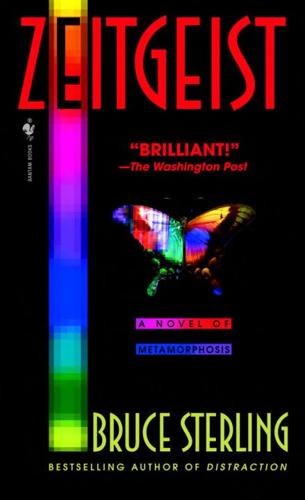
Zeitgeist
by
Bruce Sterling
Published 1 Nov 2000
They’re totally insane. And they are armed to the teeth.” “That’s an ATF job. I never work with the ninja tobacco-inspectors.” “Uh, okay … how about a military washout kid who’s got a borderline, white-supremacist, paranoia thing? He’s buying fertilizer and he hired a rental truck!” “Tell it to Ted Kaczynski! I don’t do loners. There’s way too many of ’em. I need a case with some meat on it, like a good RICO thing.” “I’m with you here.… Okay, maybe I’m scraping the bottom of the barrel, but how about a private mafia of trench-coat-wearing high-school teenagers who want to shoot all the jocks in their gym class?”
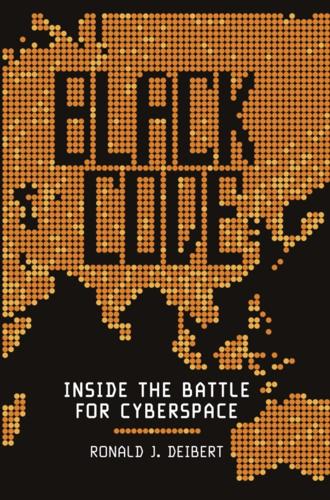
Black Code: Inside the Battle for Cyberspace
by
Ronald J. Deibert
Published 13 May 2013
The neutron bomb was an enhanced radiation weapon under development during the Carter and Reagan administrations that would kill people while leaving buildings and infrastructure intact, through a highly concentrated dispersal of radioactive material. (Soviet General Secretary Leonid Brezhnev memorably described it as a “capitalist bomb” because it would destroy people, but not property.) Stuxnet-type weapons, on the other hand, are more like something inspired by Unabomber Ted Kaczynski: they would target industrial-technological systems, but leave people alone. The attraction of technology that allows one to believe in sanitary or “virtual war” has a long pedigree. Political scientist James Der Derian has spent considerable time turning over the argument, and believes that the appeal of high-tech means of fighting clean wars comes from it being “the closest we moderns have [come] to a deus ex machina swooping in from the skies to fix the dilemmas of world politics, virtually solving intractable political problems through technological means.”
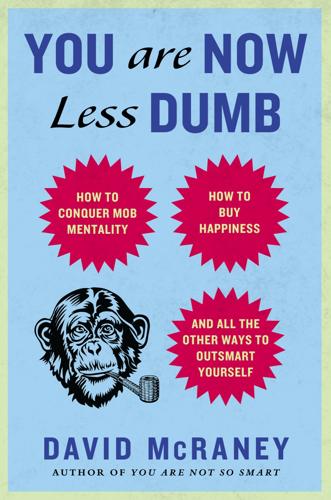
You Are Now Less Dumb: How to Conquer Mob Mentality, How to Buy Happiness, and All the Other Ways to Outsmart Yourself
by
David McRaney
Published 29 Jul 2013
The results of the social exclusion study suggest that when you’ve been rejected by society it’s as if somewhere deep inside you ask yourself, “Why keep regulating my behavior if no one cares what I do?” You may have felt the urge to shut down your computer, shed your clothes, and walk naked into the woods, but you don’t do it. With differing motivations, many people have famously exited society to be alone: Ted Kaczynski, Henry David Thoreau, and Christopher McCandless, to name a few. As with these three, most don’t go so far as to shed all remnants of the tools and trappings of modern living. You may decide one day to throw middle fingers at the material world and head into the wild, but you’ll probably keep your shoes on and take a pocketknife at the very least.
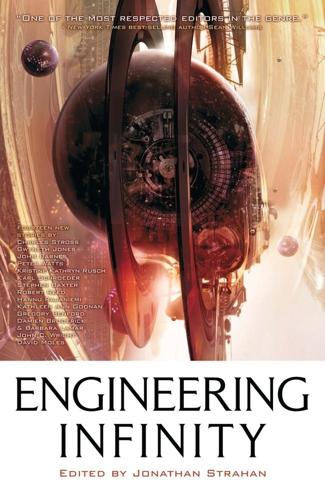
Engineering Infinity
by
Jonathan Strahan
Published 28 Dec 2010
Complex quantum processes generated them and some theorists thought the number might be quite few. If so, Warren could not reach some timelines. Already the cage had refused to go to four target murderers, so perhaps his opportunities were not as large as the hundreds or thousands he had at first dreamed about. He had already shot Ted Kaczynski, the "Unabomber." That murderer had targeted universities and wrote a manifesto that he distributed to the media, claiming that he wanted society to return to a time when technology was not a threat to its future. Kaczynski had not considered that a future technology would erase his deeds. Kaczynski's surprised gasp lay behind him now.
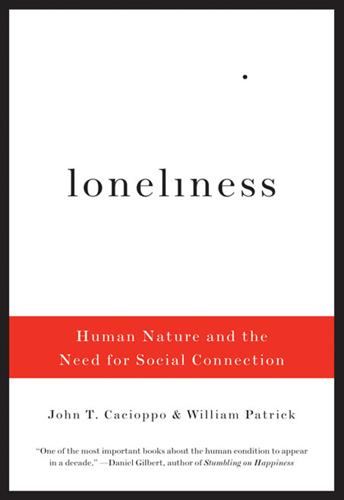
Loneliness: Human Nature and the Need for Social Connection
by
John T. Cacioppo
Published 9 Aug 2009
Accordingly, there are no easy-to-assign labels where loneliness is concerned. When a deranged man named Russell Weston Jr. stormed the U.S. Capitol in 1998, his picture appeared on the cover of Newsweek under a banner headline: “The Loner.” The media applied that same vague judgment to the Unabomber Ted Kaczynski, to President Reagan’s assailant John Hinckley, to the Virginia Tech mass murderer Cho Seung-Hui, and to any number of other socially marginalized individuals. However, our studies of a diverse group of healthy young adults show that everyday folks who feel the pain of isolation very acutely—people who may feel tremendously lonely—have no more in common with the dangerously troubled souls who make headlines than does anyone else.
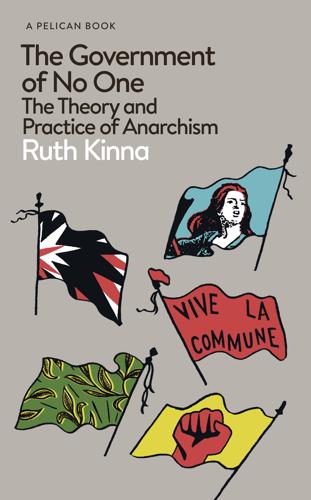
The Government of No One: The Theory and Practice of Anarchism
by
Ruth Kinna
Published 31 Jul 2019
He became active in labour and left-wing politics in the 1960s and was arrested in 1966 at an anti-Vietnam protest. In his writing, Zerzan first explored the emergence of trade unionism and industrialization. This led to a study of technology and civilization in the 1980s. He attracted international attention in the 1990s when he began a correspondence with Ted Kaczynski, the ecological activist better known as the Unabomber, and refused to condemn his bombing campaign. Having settled in Eugene, Oregon, in the 1980s, Zerzan also became strongly linked to the anarchist movements that mushroomed there which helped catalyze the anti-capitalist activism of the noughties.
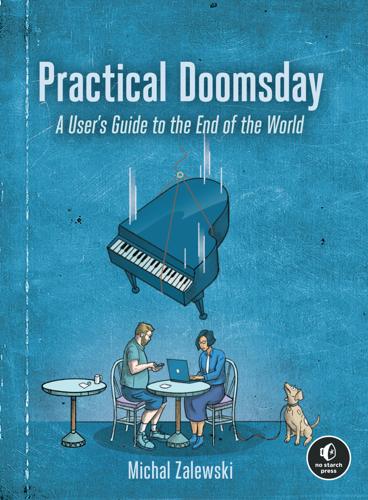
Practical Doomsday: A User's Guide to the End of the World
by
Michal Zalewski
Published 11 Jan 2022
The devastating Oklahoma City bombing in 1995, itself purportedly a reprisal for the grotesquely mishandled standoffs at Waco and Ruby Ridge, catalyzed radical militia movements and fed into the enduring siege mentality across many law enforcement agencies. The decades-long bombing campaign carried out by Ted Kaczynski, a brilliant Polish-American mathematician with a mix of apocalyptic and pro-environmental beliefs, sowed fear throughout the nation’s institutions well into the 1990s—and in the end, salvaged the reputation of the scandal-plagued Federal Bureau of Investigation. Many other incidents—the anthrax letters of the 2000s, the brazen Olympic Park bombing of 1996, the killings of abortion clinic doctors and the activities of radical pro-animal activists, the Weathermen, the mysterious 2013 attack at a California power station,20 and on and on—are all but forgotten in the annals of history, but should serve as a reminder that terrorism is a looming and profound threat.

American Kingpin: The Epic Hunt for the Criminal Mastermind Behind the Silk Road
by
Nick Bilton
Published 15 Mar 2017
Some of these newer artifacts sit on the Hubbard Concourse in the contemporary Newseum at 555 Pennsylvania Avenue, a few blocks away from the White House. The relics at this museum hail from some of the biggest criminal cases in American history. In one corner of the exhibit there is an old wooden cabin, barely big enough for a man, that belonged to Ted Kaczynski, the Unabomber. Nearby a pair of thick black sneakers sit, their bases torn open; they were worn by the Shoe Bomber, Richard Reid, when he tried to blow up an American Airlines flight in 2001. And then, farther along in the exhibit, a glass box contains exhibit number 2015.6008.43a, which is a silver Samsung laptop.
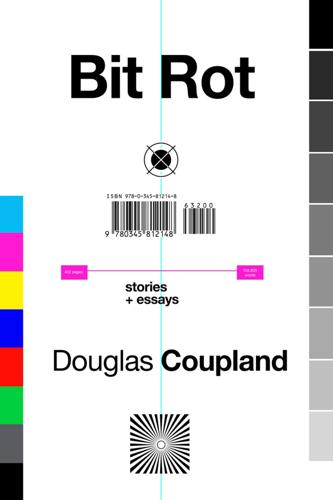
Bit Rot
by
Douglas Coupland
Published 4 Oct 2016
In 2015 you can probably buy a mis-spellcheck as a forty-nine-cent app from the iTunes store…or upgrade to Mis-spellcheck Pro for another ninety-nine cents. What a strange world. It makes one long for the world before DNA and the Internet, a world in which people could genuinely vanish. The Unabomber—Theodore “Ted” Kaczynski—seems like a poster boy for this strain of yearning. He had literally no data stream, save for his bombs and his manifesto, which ended up being his undoing. How? He promised The New York Times that he’d stop sending bombs if they would print his manifesto, which they did. And then his brother recognized his writing style and turned him in to the FBI.
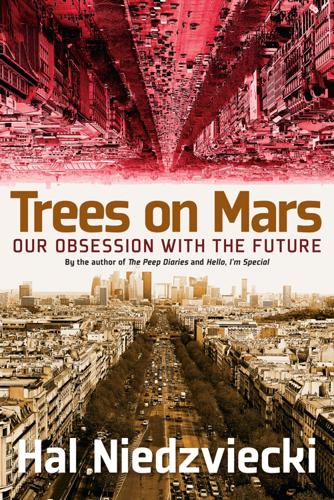
Trees on Mars: Our Obsession With the Future
by
Hal Niedzviecki
Published 15 Mar 2015
In Yale computer scientist David Gelernterl’s novel 1939: The Lost World of the Fair, an homage to the great era of institutional futurism, the author recreates a time when we believed we could shape the future in amazing ways collectively through our institutions.45 But here’s the thing: he wrote the book while recovering from a package bomb sent to his office by the Unabomber, Ted Kaczynski. The bomb blew off most of his right hand and left him almost blind in one eye. Ironically, by then, like Kaczynski himself, he had become disillusioned with technological change. But unlike Kaczynski, who sought to kill scientists in order to bring a halt to technological change, Gelernter believed in the opposite problem: that we had lost our fervor, our collective faith in the revolutionary possibilities of technology to build a better world for all.
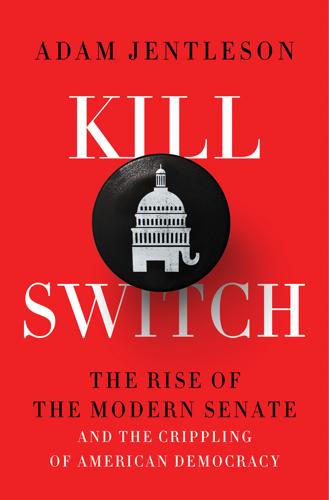
Kill Switch: The Rise of the Modern Senate and the Crippling of American Democracy
by
Adam Jentleson
Published 12 Jan 2021
“Well …,” I said, thinking out loud about what I was going to tell the reporters waiting in the hallway outside Reid’s office. “Well, this could be good …,” I started. Reid threw back his head, laughing. Judge Merrick Garland is a wonderful human being with an impressive record. At the Justice Department, he had overseen the federal investigations into the Oklahoma City bomber, Timothy McVeigh, and the Unabomber, Ted Kaczynski. His credentials as a jurist were unimpeachable, and he had been confirmed to his current job on the U.S. Court of Appeals D.C. Circuit with Republican support. For eighteen years, he tutored children at a public school in a low-income neighborhood of Washington, DC. And his personal demeanor was so kind and wise, White House aides had started referring to him, affectionately, as Dumbledore, the sagacious wizard from the Harry Potter books.6 But he had no chance to make it to the Supreme Court, and Reid knew it.

The Coming Wave: Technology, Power, and the Twenty-First Century's Greatest Dilemma
by
Mustafa Suleyman
Published 4 Sep 2023
The greatest accelerant of human progress imaginable, it will also enable harms—from wars and accidents to random terror groups, authoritarian governments, overreaching corporations, plain theft, and willful sabotage. Think about an ACI capable of easily passing the Modern Turing Test, but turned toward catastrophic ends. Advanced AIs and synthetic biology will not only be available to groups finding new sources of energy or life-changing drugs; they will also be available to the next Ted Kaczynski. AI is both valuable and dangerous precisely because it’s an extension of our best and worst selves. And as a technology premised on learning, it can keep adapting, probing, producing novel strategies and ideas potentially far removed from anything before considered, even by other AIs. Ask it to suggest ways of knocking out the freshwater supply, or crashing the stock market, or triggering a nuclear war, or designing the ultimate virus, and it will.
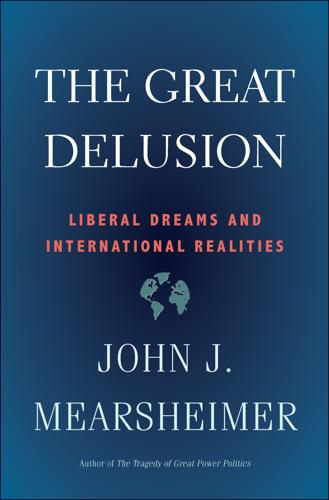
The Great Delusion: Liberal Dreams and International Realities
by
John J. Mearsheimer
Published 24 Sep 2018
The evidence is overwhelming that humans are psychologically disposed to want to be part of a society. Humans are hardwired to want frequent interactions with other humans, including people outside their immediate families. Hardly anyone moves to a remote area and cuts off all contact with the outside world. Even Ted Kaczynski, the infamous Unabomber, continued to interact with American society, albeit in limited and wicked ways. The Survival Imperative Survival is the foremost reason that humans naturally operate in groups larger than the family unit.42 For starters, individuals need sexual partners, not only to satisfy their desires but also to help create and sustain families and the species more generally.43 The need to reproduce is common to all species, and for primates that necessitates looking for sexual partners beyond one’s immediate family.
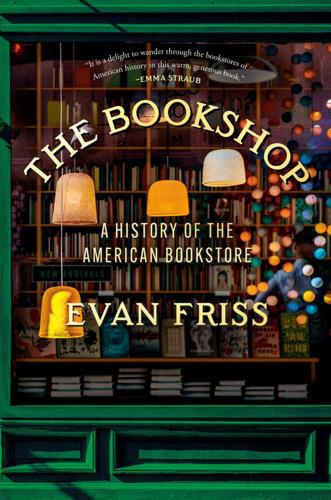
The Bookshop: A History of the American Bookstore
by
Evan Friss
Published 5 Aug 2024
So did the booksellers at the Borders in Emeryville, California, in 1997. Their spiral notebook recorded tender moments (the little boy with a camera around his neck who asked a helpful bookseller if she’d join his family vacation), irritable customers (“the snob” who demanded The Little Prince in its original French, and at once), and the scary ones. (“A Ted Kaczynski type wants to know where the math is. I led him there slowly.”) Bookstores also stimulate our senses. Being surrounded by books matters. Sociologists have found that just growing up in a home full of books—mere proximity—confers a lifetime of intellectual benefits. Books offer warmth, comfort, and refuge.
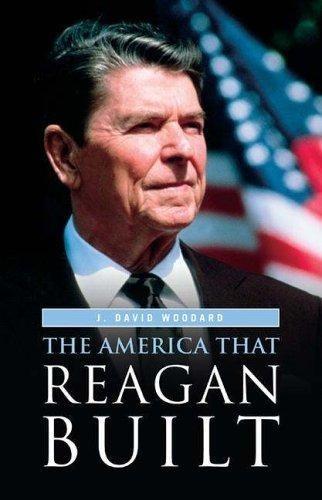
The America That Reagan Built
by
J. David Woodard
Published 15 Mar 2006
The prospect of receiving a bomb in an unknown package caused thousands of people to refuse perfectly legitimate mailings. The bombs killed three people and wounded twenty-nine. Before his identity was known, the FBI referred to the mail bomber as the ‘‘Unabomber,’’ which was an acronym for ‘‘university and airline bombers.’’ The university part was certainly appropriate for Ted Kaczynski. Born in Chicago, he was an intellectually gifted child who was also shy and aloof. He skipped two grades, graduating from high school in 1958 and entering Harvard at the age of sixteen to major in mathematics. Kaczynski graduated in four years to attend the University of Michigan, Ann Arbor, and earn a Ph.D. in mathematics.

Smart Cities: Big Data, Civic Hackers, and the Quest for a New Utopia
by
Anthony M. Townsend
Published 29 Sep 2013
“Some part of your world—the town you live in, the company you work for, your school system, the city hospital—will hang there in a sharp color image, abstract but recognizable, moving subtly in a thousand places . . . fed by a steady rush of new data pouring in through cables . . . infiltrated by your own software creatures, doing your business.”37 It was a vision so all-encompassing and transformational that it spurred mail bomber Ted Kaczynski to break a six-year hiatus in 1993, and dispatch the incendiary missive that narrowly missed taking Gelernter’s life. Mirror Worlds foretold with astonishing accuracy the way sensing, networking, computation, and visualization are converging in our world today. But what’s really interesting is how over and over Gelernter used cities to illustrate the power of tools that capture vast complexity in real time.

The Contrarian: Peter Thiel and Silicon Valley's Pursuit of Power
by
Max Chafkin
Published 14 Sep 2021
But Thiel insisted. Gelernter was the smartest computer scientist he knew, he said—and, on top of that, Thiel added, Gelernter had been blown up by the Unabomber. In 1993, not long after publishing a book about the coming prevalence of virtual reality, Mirror Worlds, he received a package from Ted Kaczynski, the former Berkeley mathematician who’d been sending letter bombs to technologists and others whom he believed were contributing to a dystopian future. Gelernter was severely injured and lost part of his right hand in the explosion. In a way, this made Gelernter a technology martyr, which impressed Thiel, though it completely derailed the conversation with Trump.

Blood in the Machine: The Origins of the Rebellion Against Big Tech
by
Brian Merchant
Published 25 Sep 2023
In a famous exchange dissected by theorists like Marshall McLuhan and Neil Postman, Thamus warns Theuth about writing, arguing that “those who acquire it will cease to use their memory and become forgetful.” Today, someone making the equivalent argument about, say, smartphones making us less smart—would be called a Luddite. The list of critics of invention and “progress” is endless; it includes Sigmund Freud, Henry David Thoreau, Ted Kaczynski, and certain Amish sects. In Walden, Thoreau famously wrote, “Our inventions are wont to be pretty toys, which distract our attention from serious things. They are but improved means to an unimproved end, an end which it was already but too easy to arrive at.” But to argue that we should return to a more rural, nature-centric mode of life is not Luddism, it’s pastoralism.
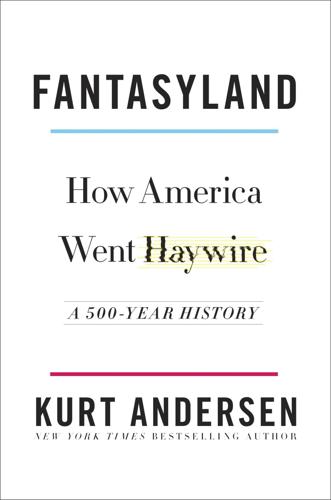
Fantasyland: How America Went Haywire: A 500-Year History
by
Kurt Andersen
Published 4 Sep 2017
Once you really believe, you can always find new evidence to support your beliefs. There are now millions of Americans counting on a nonsupernatural apocalypse. They got a bigger tent when the term preppers became common in the 1980s, a rubric encompassing everybody from hardcore survivalists to wannabes and lookie-loos, from that Ted Kaczynski–ish guy who carries his AR-15 into the diner to the nice couple down the block with a basement room full of whey powder and antibiotics. Preppers are to survivalists as evangelicals are to fundamentalists. Of course, the premise of prepping and survivalism isn’t necessarily delusional. It’s possible some sudden catastrophic breakdown of systems could occur and last for months or years.
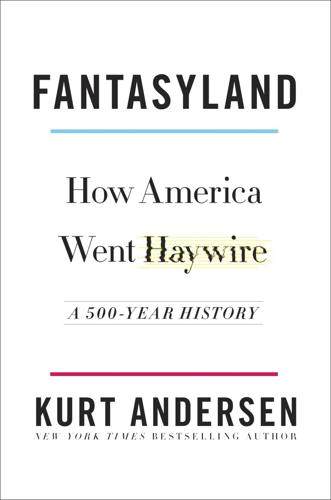
Fantasyland
by
Kurt Andersen
Published 5 Sep 2017
Once you really believe, you can always find new evidence to support your beliefs. There are now millions of Americans counting on a nonsupernatural apocalypse. They got a bigger tent when the term preppers became common in the 1980s, a rubric encompassing everybody from hardcore survivalists to wannabes and lookie-loos, from that Ted Kaczynski–ish guy who carries his AR-15 into the diner to the nice couple down the block with a basement room full of whey powder and antibiotics. Preppers are to survivalists as evangelicals are to fundamentalists. Of course, the premise of prepping and survivalism isn’t necessarily delusional. It’s possible some sudden catastrophic breakdown of systems could occur and last for months or years.

Architects of Intelligence
by
Martin Ford
Published 16 Nov 2018
There was extensive discussion of the downsides of GNR—Genetics, Nanotechnology, and Robotics (which means AI)—in my book, The Age of Spiritual Machines, which came out in 1999 that led Bill Joy to write his famous Wired cover story in January 2000 titled, Why the Future Doesn’t Need Us. MARTIN FORD: That was based upon a quote from Ted Kaczynski, the Unabomber, wasn’t it? RAY KURZWEIL: I have a quote from him on one page that sounds like a very level-headed expression of concern, and then you turn the page, and you see that this is from the Unabomber Manifesto. I discussed in quite some detail in that book the existential risk of GNR.

This Changes Everything: Capitalism vs. The Climate
by
Naomi Klein
Published 15 Sep 2014
Then there is “Climategate,” a manufactured scandal in which climate scientists’ emails were hacked and their contents distorted by the Heartlanders and their allies, who claimed to find evidence of manipulated data (the scientists were repeatedly vindicated of wrongdoing). In 2012, the Heartland Institute even landed itself in hot water by running a billboard campaign that compared people who believe in climate change (“warmists” in denialist lingo) to murderous cult leader Charles Manson and Unabomber Ted Kaczynski. “I still believe in Global Warming. Do you?” the first ad demanded in bold red letters under a picture of Kaczynski. For Heartlanders, denying climate science is part of a war, and they act like it.26 Many deniers are quite open about the fact that their distrust of the science grew out of a powerful fear that if climate change is real, the political implications would be catastrophic.

Enlightenment Now: The Case for Reason, Science, Humanism, and Progress
by
Steven Pinker
Published 13 Feb 2018
Murray, “A Guaranteed Income for Every American,” Wall Street Journal, June 3, 2016. 69. Studies of the effects of basic income: Bregman 2017. High-tech volunteering: Diamandis & Kotler 2012. Effective altruism: MacAskill 2015. CHAPTER 10: THE ENVIRONMENT 1. See Gore’s 1992 Earth in the Balance; Ted Kaczynski (the Unabomber), “Industrial Society and Its Future,” http://www.washingtonpost.com/wp-srv/national/longterm/unabomber/manifesto.text.htm; Francis 2015. Kaczynski read Gore’s book, and the similarities between it and his manifesto were pointed out in an undated Internet quiz by Ken Crossman: http://www.crm114.com/algore/quiz.html. 2.